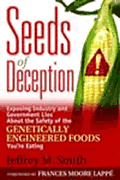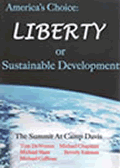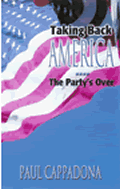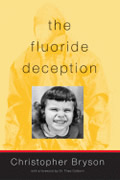Other NWV
Headlines:
New Mental Health Program Alarms Parents in Illinois
Senate Passes Unborn Victims of Violence Act
Book Banned In America While Troops Die For Freedom
EMBRYONIC STEM CELL
RESEARCH ON ITS WAY OUT?
March 27, 2005
Posted
1:00 AM Eastern
NewsWithViews.com
In November 2004, the voters of California, seemingly swayed by emotional television commercials featuring the late Christopher Reeves and Hollywood hunk, Brad Pitt, passed a $3 billion dollar stem cell research windfall (search). Opponents of Proposition 71 say that Californians voted, not on any scientific basis, but rather because so many voters or their family members suffer from conditions like Parkinson's and Alzheimer's, they voted to burden taxpayers to fund possible cures for them and family members.
Opponents of embryonic stem cell research maintain that adult stem cell application has produced success after success while embryonic stem cell research has produced dismal results.
Taken from a person's own body or from umbilical cord or placenta, supporters maintain these these cells are treating ever more diseases successfully. Caritas St. Elizabeth's Medical Center has identified adult stem cells that "may have the capacity to repair and regenerate all tissue types in the body." These findings by Young-sup Yoon, M.D., Ph.D., and Douglas Losordo, M.D., chief of cardiovascular research at Caritas St. Elizabeth's Medical Center were published in the February 1, 2005, issue of the Journal of Clinical investigation.
�This discovery represents a major breakthrough in stem cell therapy,� said Dr. Losordo. �Previously identified adult stem cells can only generate into certain types of body tissue. Based on our findings we believe these newly discovered stem cells may have the capacity to generate into most tissue types in the human body. This is a very unique property that until this time has only been found in embryonic stem cells.�
According to documentation released, "During the study, Dr. Losordo and his team of researchers extracted stem cells from human bone marrow and transplanted them into the damaged hearts of rats. The stem cells induced cardiac regeneration, including the growth of new muscle and blood vessels in the heart. In addition, the researchers demonstrated that this specific subpopulation of stem cells has the capacity to develop into all types of cells, including those that make up the glands, digestive tract, hair, skin, nails, brain, nervous system, and muscle.
�I am extremely proud of what Dr. Yoon�s research team at Caritas St. Elizabeth's has accomplished,� said Dr. Losordo. �In the future, we may be able to extract stem cells from a patient's bone marrow to repair a wide variety of damaged tissue in his or her body. Furthermore, by growing tissue from a patient's own stem cells, we could overcome issues related to cell therapy, such as tissue rejection.�
Opponents of stem cell research claim it is just a cash cow for doctors and scientists to play around with life. Dr. Losordo submits that adult stem cells are much easier to grow and that his work, combined with others could "render moot the debate between embryonic and adult stem cells." According to Losordo, "We're entering the second phase of development of adult stem cells. We'll soon be working on methods to enhance the efficiency of adult stem cells . . . while ESCs aren't even in the starting gate yet."
The Michael J. Fox Foundation has funded $50 million dollars in research since 2000 to find a cure for Parkinson's from which he suffers. Opponents of using embryonic stem cells promoted by organizations like Fox's say that to acquire embryonic stem cells requires the killing of human beings. Drug and research companies vigorously defend what is known as "destructive embryonic stem cell research." The Vatican has repeatedly condemned research using human embryos as "gravely immoral" because removing cells "kills an unborn child," and instead, encourages the use of stem cells from adults instead of embryos.
During a debate on the floor of the senate, U.S. Senator Sam Brownback said: �For the first time in our history, it is acceptable for medical researchers to kill one human being to help save another. Ultimately, what lies at the heart of this debate is our view of the human embryo. The central question in this debate is simple: Is the human embryo a person or a piece of property? If unborn persons are living beings, they have dignity and worth, and they deserve protection under the law from harm and destruction. If, however, unborn persons are a piece of property, then they can be destroyed with the consent of their owner.�
Based on the most recent and successful results of adult stem cell research, supporters use are hopeful that embryonic stem cell research will soon be proven to be ineffective and stopped altogether.
� 2005 NewsWithViews.com - All Rights Reserved
Sign Up For Free E-Mail Alerts
E-Mails
are used strictly for NWVs alerts, not for sale
For radio interviews or comments:
newseditor1@earthlink.net
During a debate on the floor of the senate, U.S. Senator Sam Brownback said: �For the first time in our history, it is acceptable for medical researchers to kill one human being to help save another. ...












